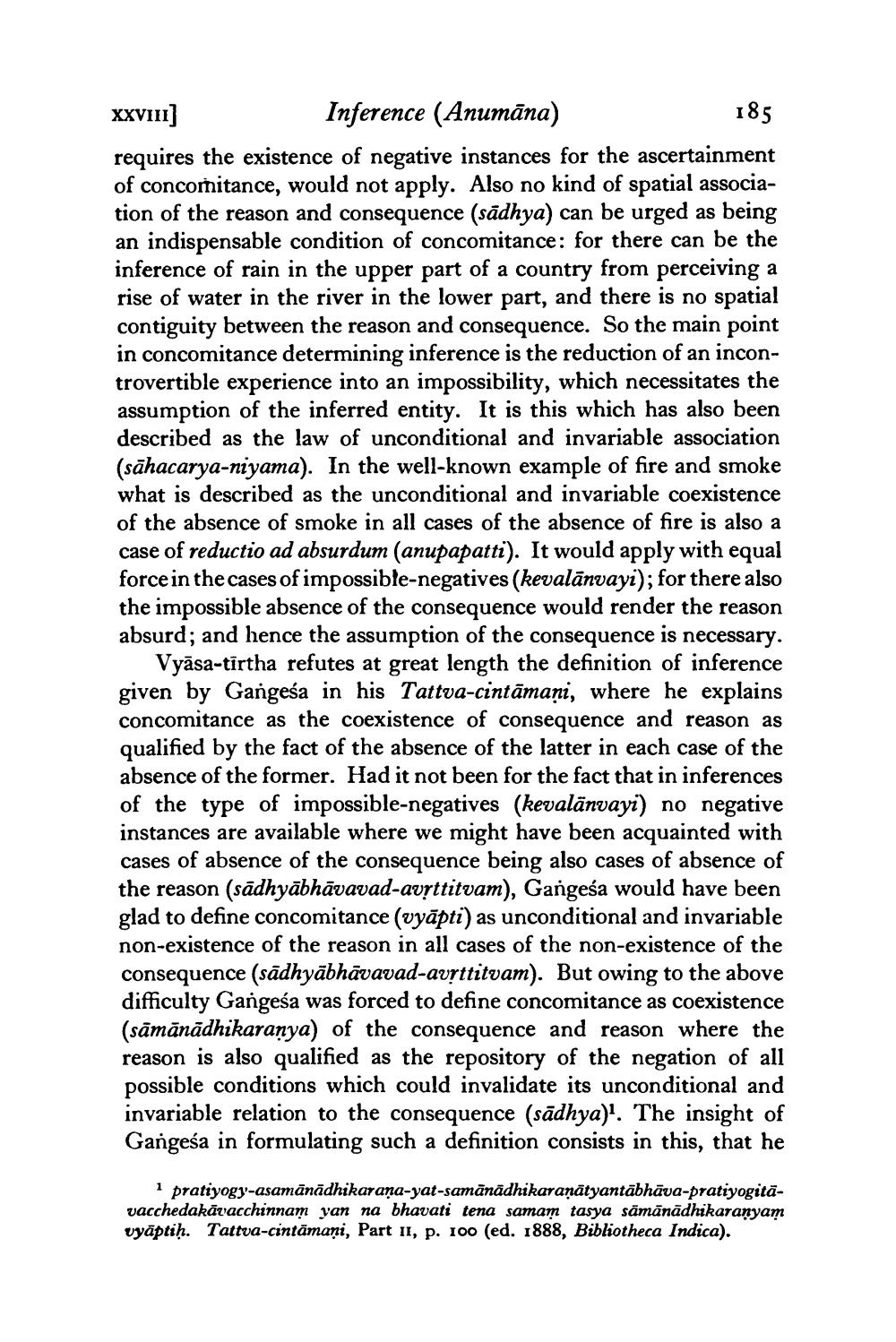________________
185
XXVIII]
Inference (Anumāna) requires the existence of negative instances for the ascertainment of concomitance, would not apply. Also no kind of spatial association of the reason and consequence (sādhya) can be urged as being an indispensable condition of concomitance: for there can be the inference of rain in the upper part of a country from perceiving a rise of water in the river in the lower part, and there is no spatial contiguity between the reason and consequence. So the main point in concomitance determining inference is the reduction of an incontrovertible experience into an impossibility, which necessitates the assumption of the inferred entity. It is this which has also been described as the law of unconditional and invariable association (sāhacarya-niyama). In the well-known example of fire and smoke what is described as the unconditional and invariable coexistence of the absence of smoke in all cases of the absence of fire is also a case of reductio ad absurdum (anupapatti). It would apply with equal force in the cases of impossible-negatives (kevalānvayi); for there also the impossible absence of the consequence would render the reason absurd; and hence the assumption of the consequence is necessary.
Vyāsa-tirtha refutes at great length the definition of inference given by Gangeśa in his Tattva-cintāmaņi, where he explains concomitance as the coexistence of consequence and reason as qualified by the fact of the absence of the latter in each case of the absence of the former. Had it not been for the fact that in inferences of the type of impossible-negatives (kevalānvayi) no negative instances are available where we might have been acquainted with cases of absence of the consequence being also cases of absence of the reason (sādhyābhāvavad-avrttitvam), Gangesa would have been glad to define concomitance (vyāpti) as unconditional and invariable non-existence of the reason in all cases of the non-existence of the consequence (sādhyābhāvavad-avsttitvam). But owing to the above difficulty Gangesa was forced to define concomitance as coexistence (sāmānādhikaranya) of the consequence and reason where the reason is also qualified as the repository of the negation of all possible conditions which could invalidate its unconditional and invariable relation to the consequence (sādhya)'. The insight of Gangeša in formulating such a definition consists in this, that he
1 pratiyogy-asamānādhikarana-yat-samānādhikaranātyantābhāva-pratiyogitavacchedakāvacchinnam yan na bhavati tena samam tasya sämānādhikaranyam vyāptiḥ. Tattva-cintamani, Part II, p. 100 (ed. 1888, Bibliotheca Indica).




